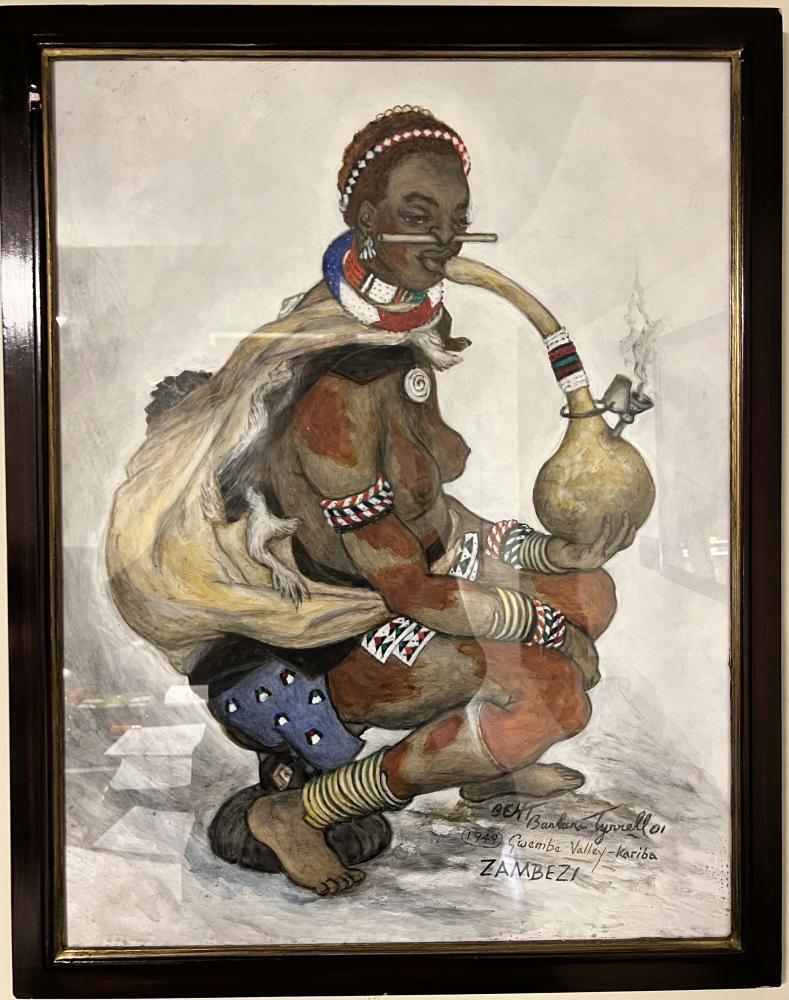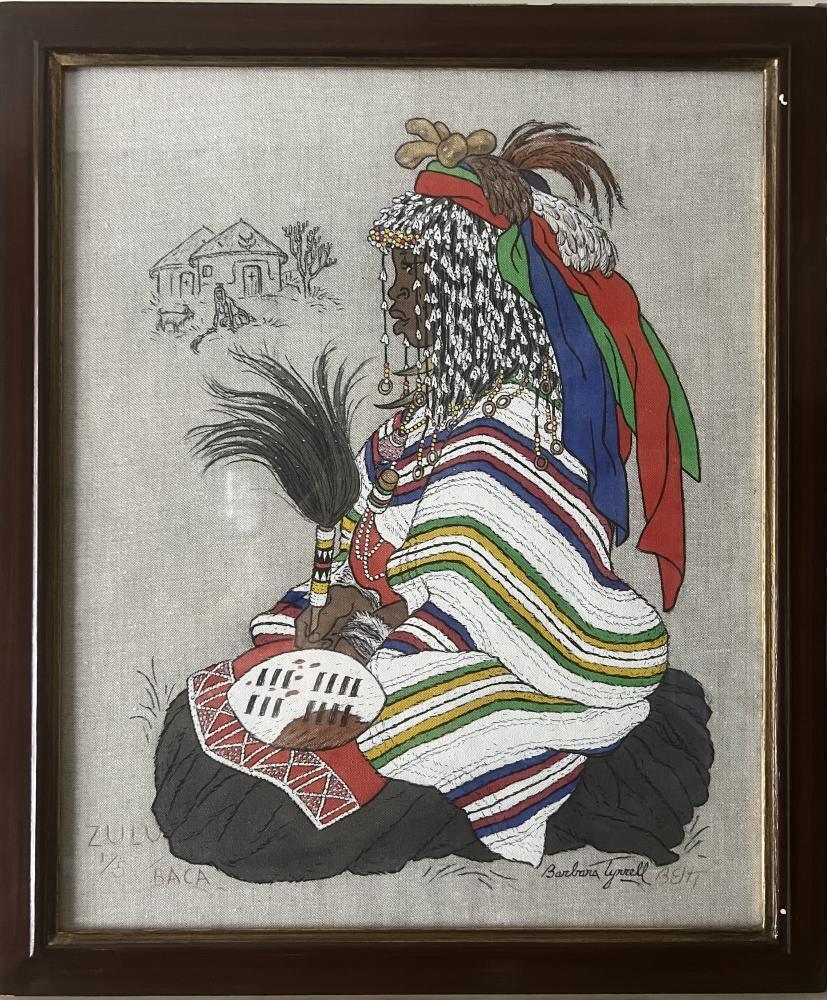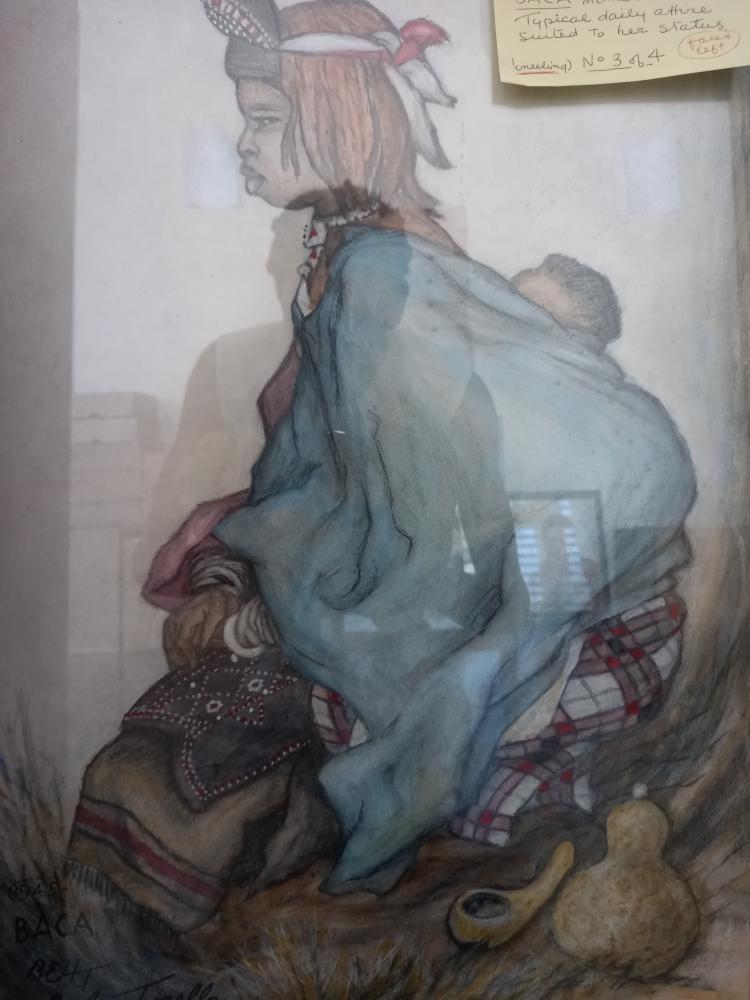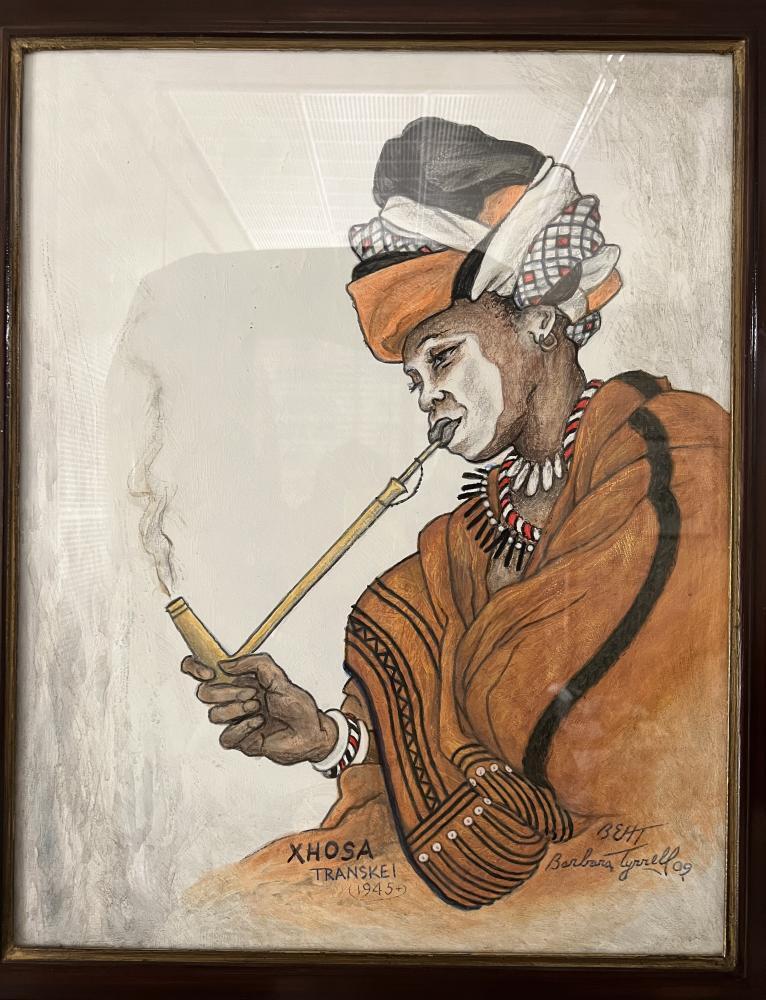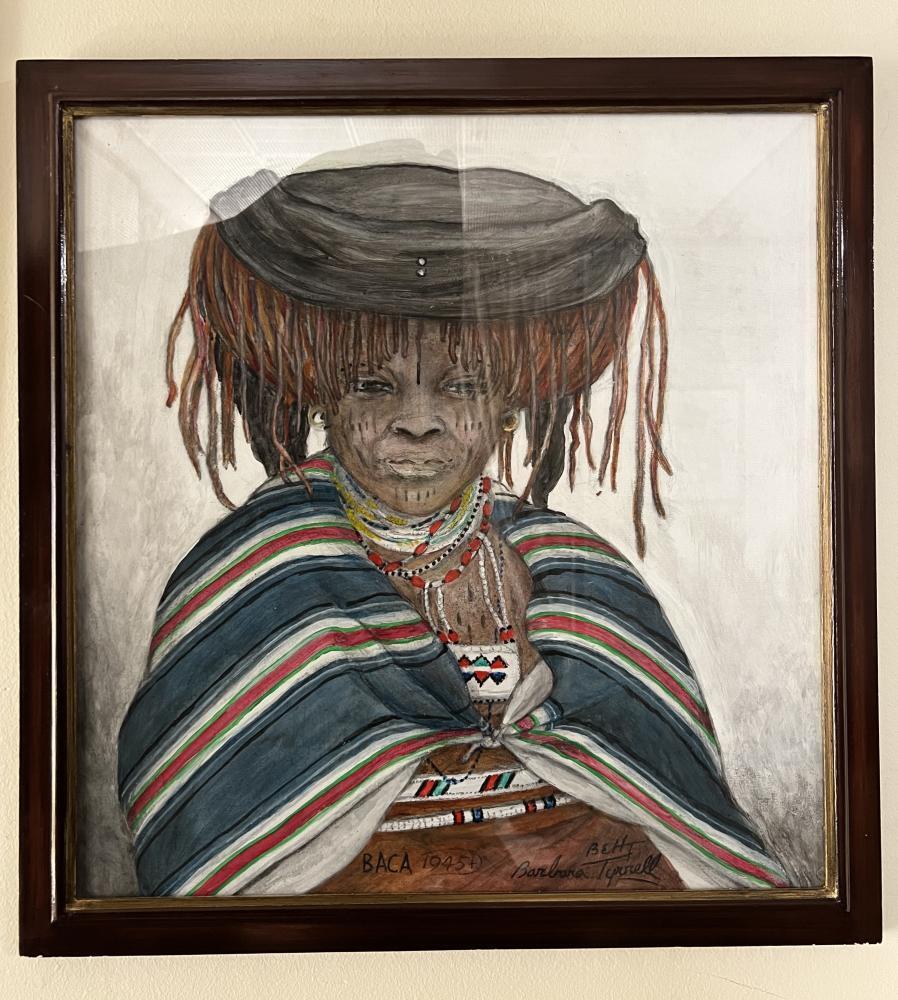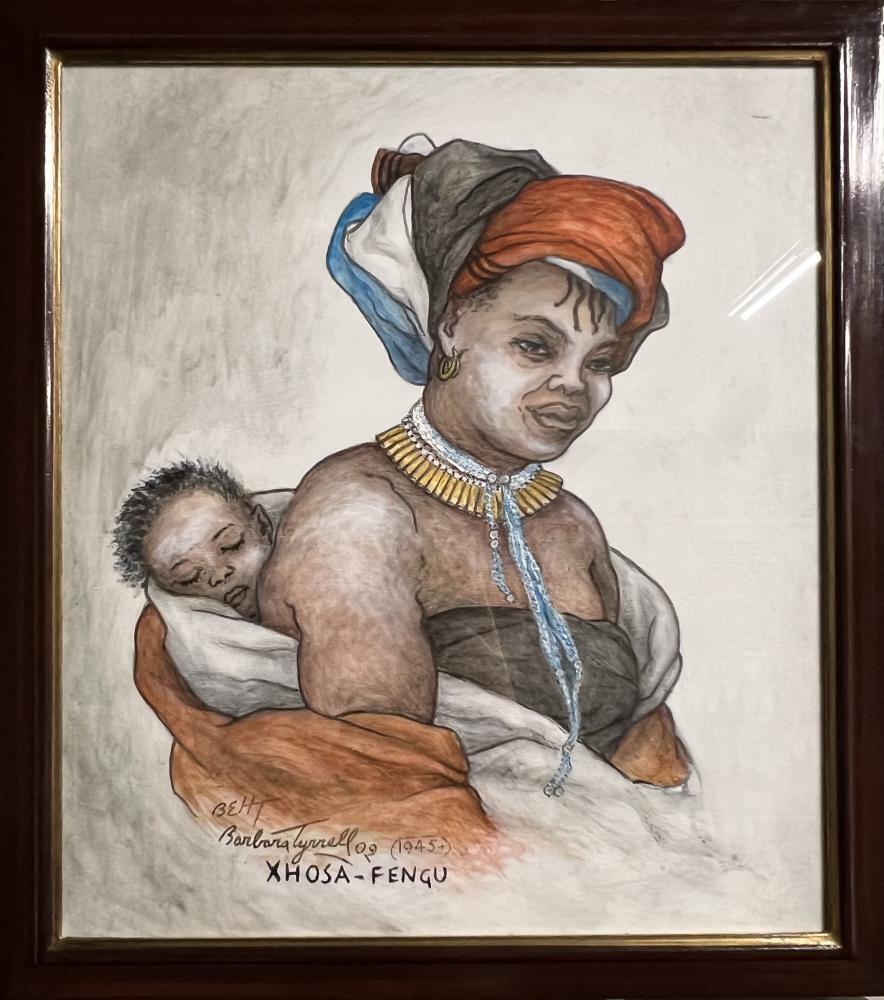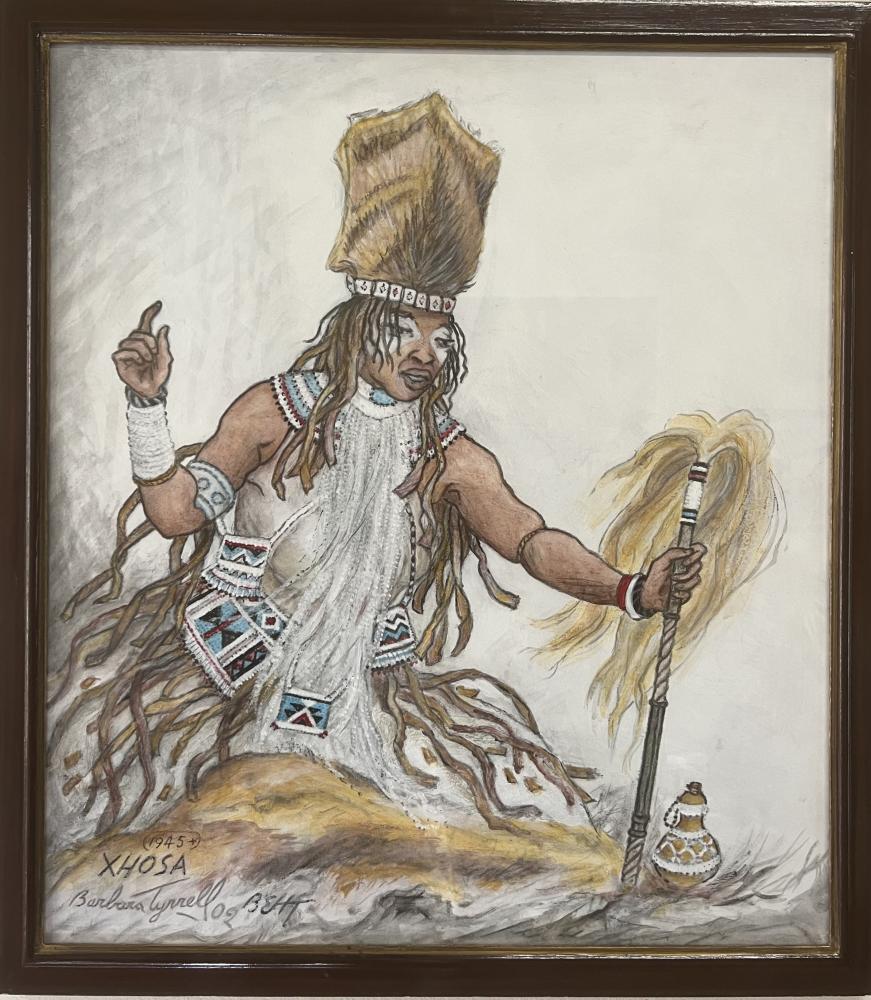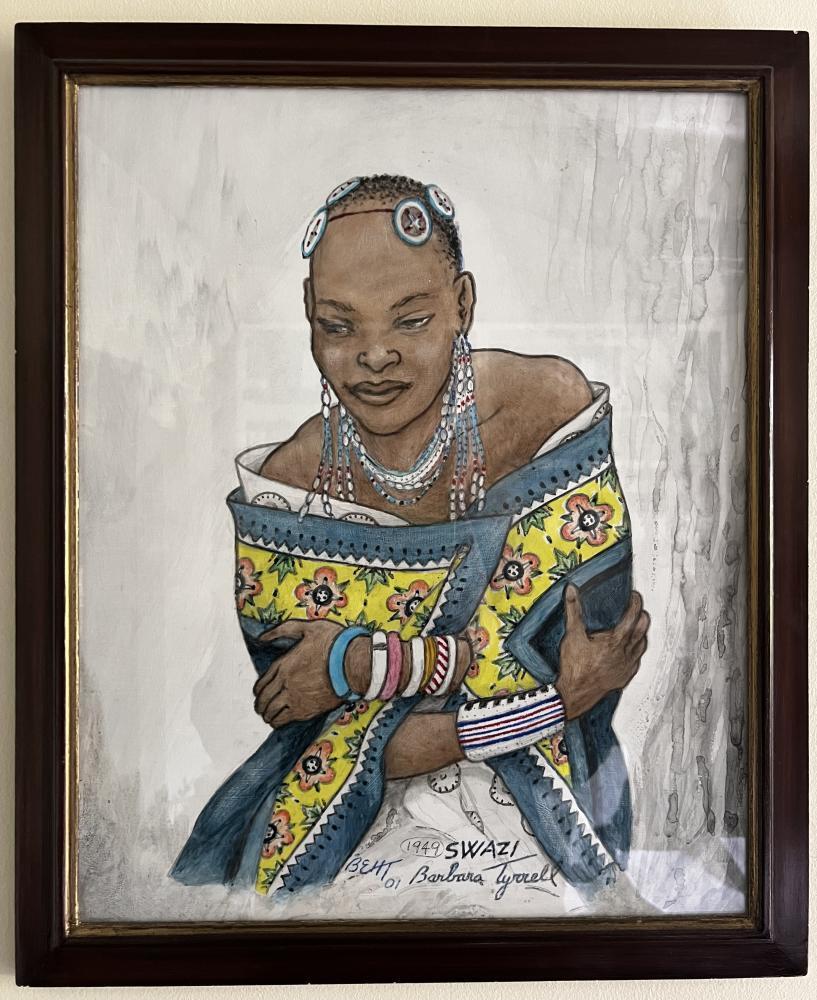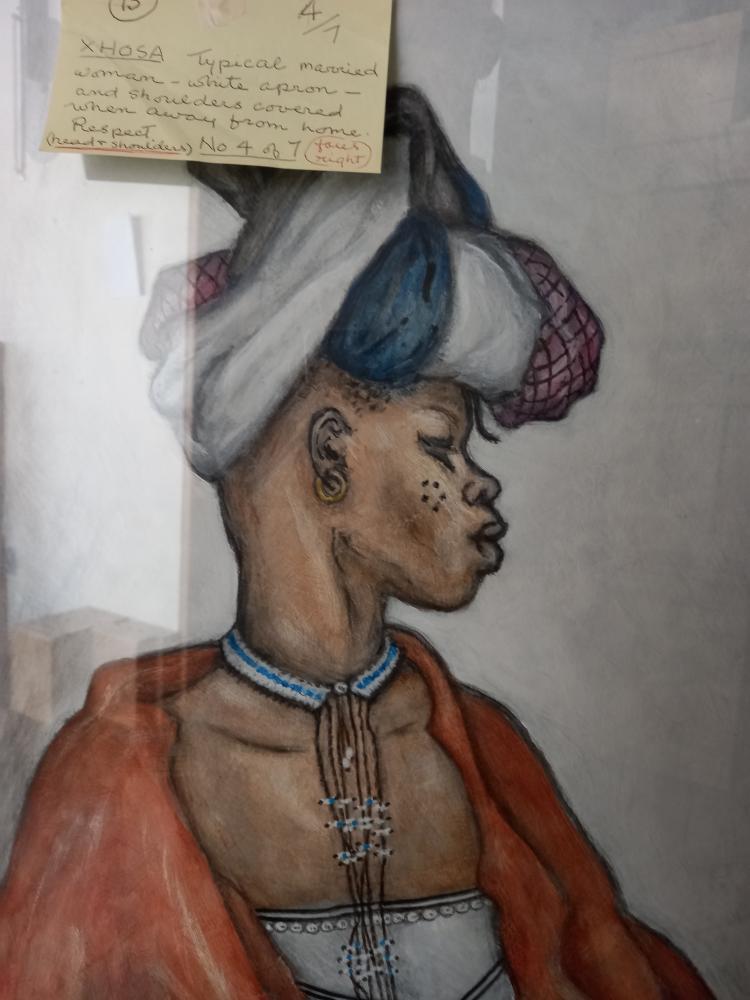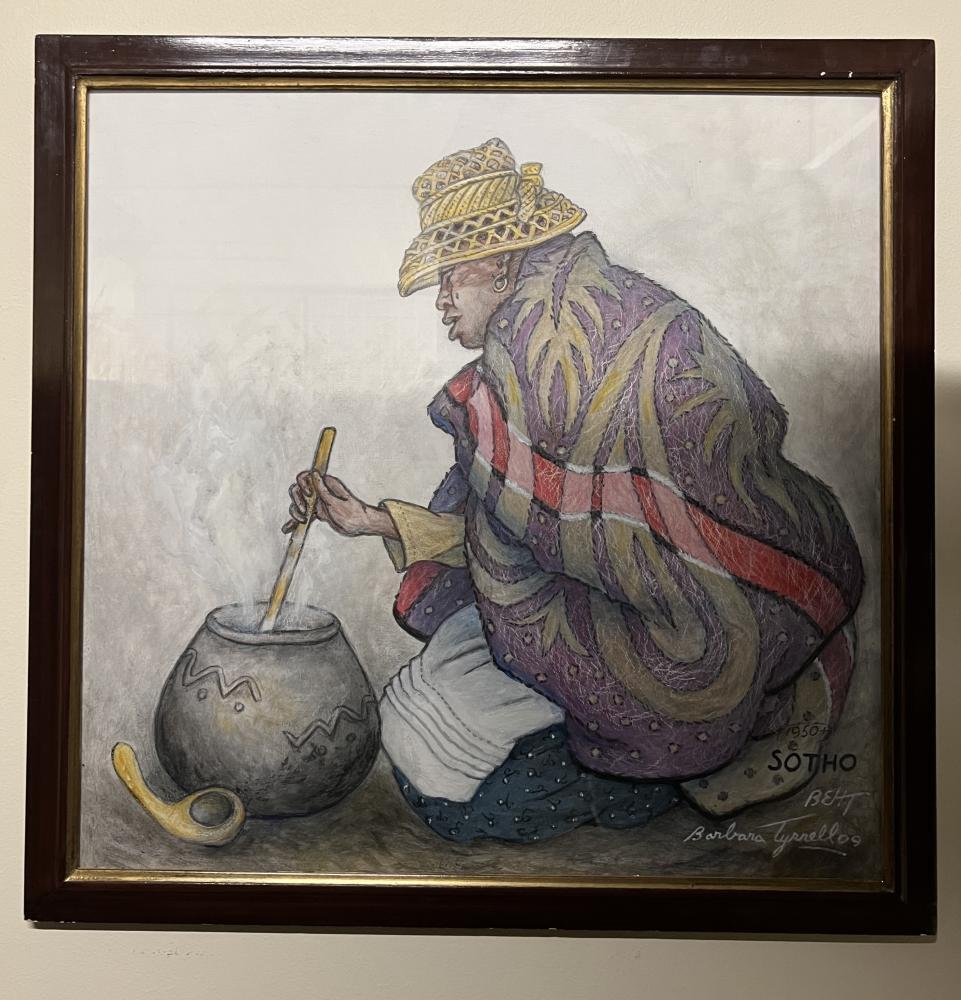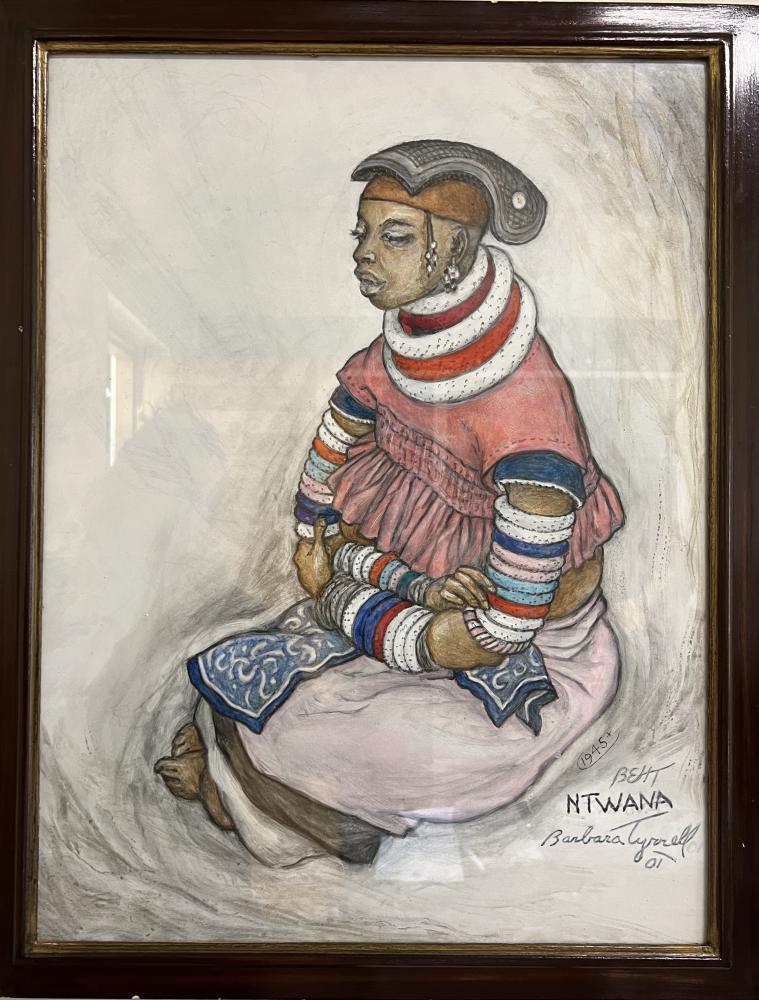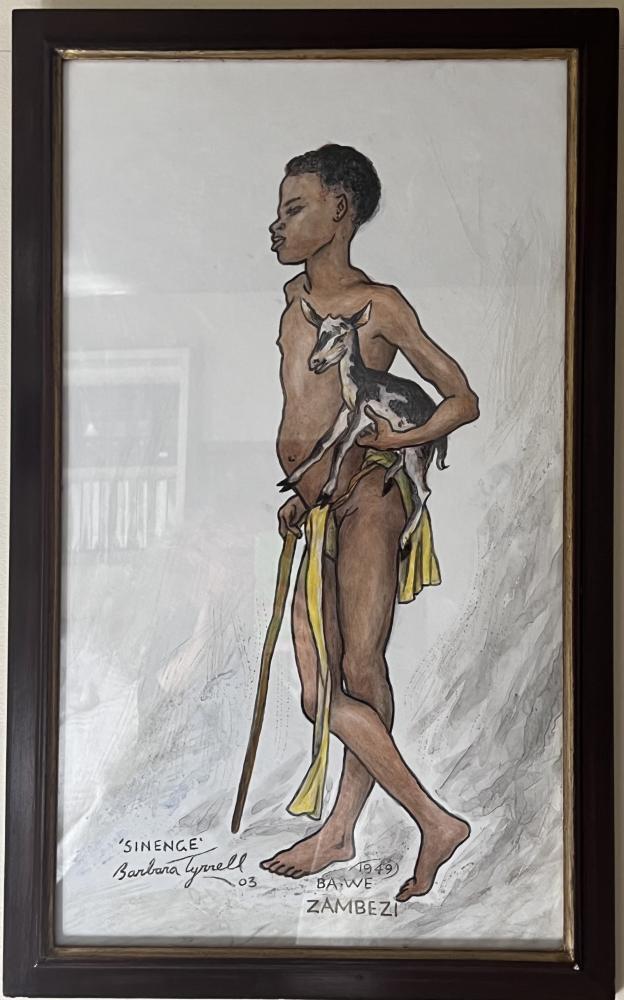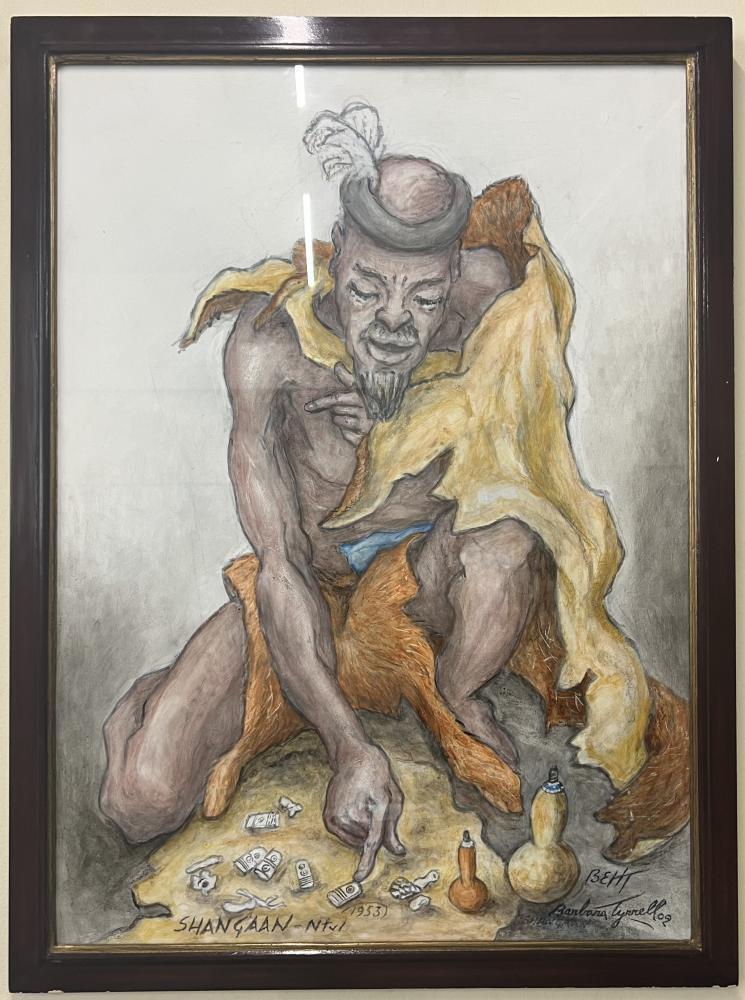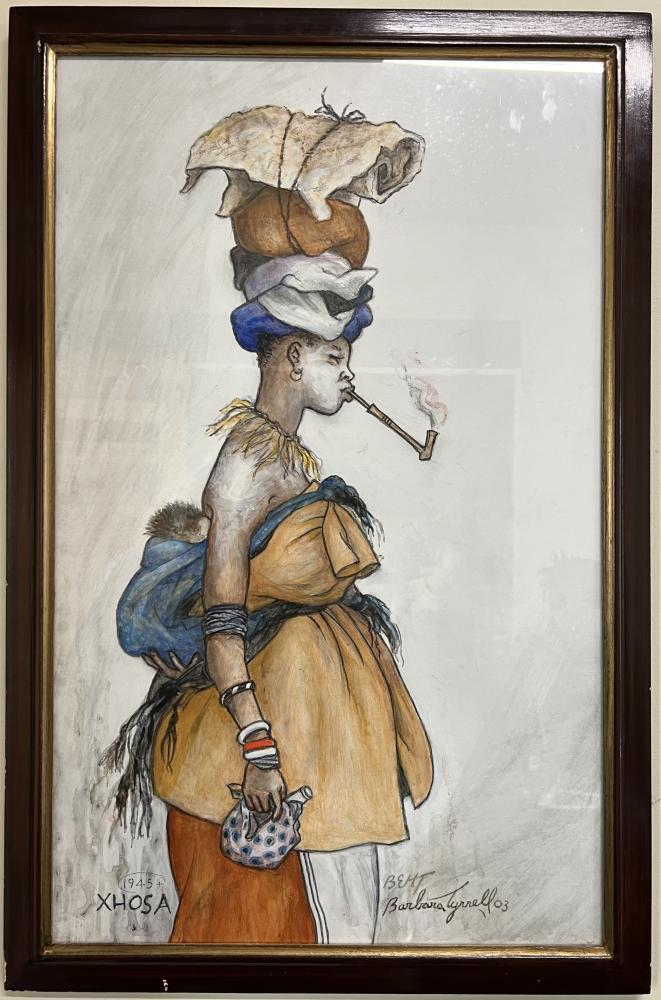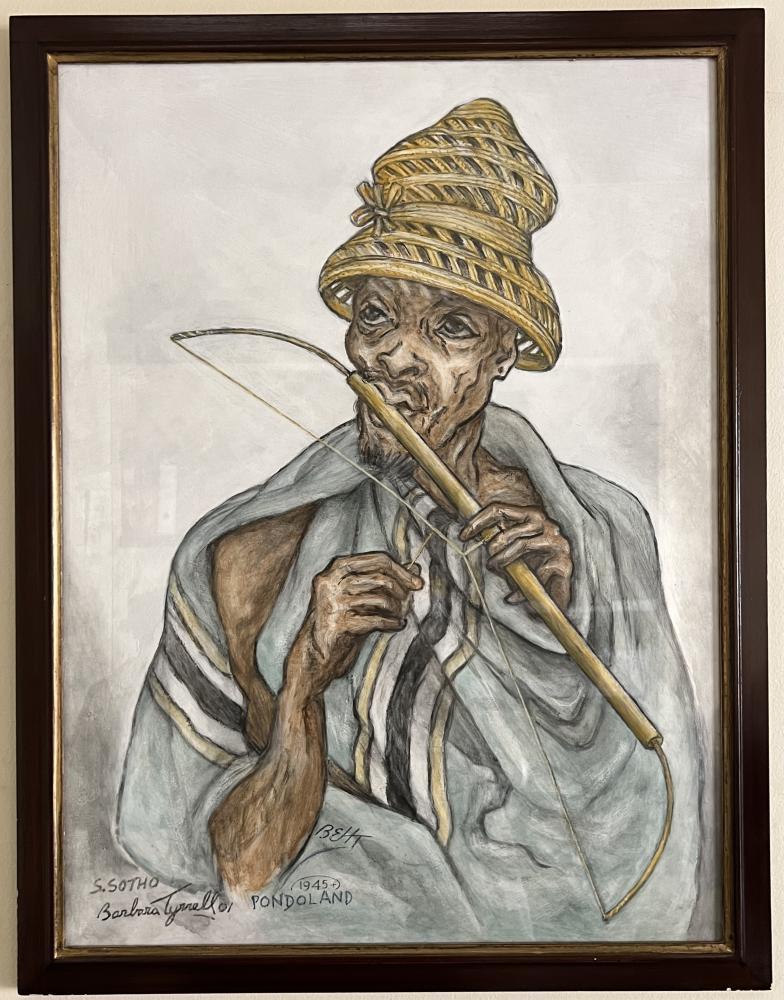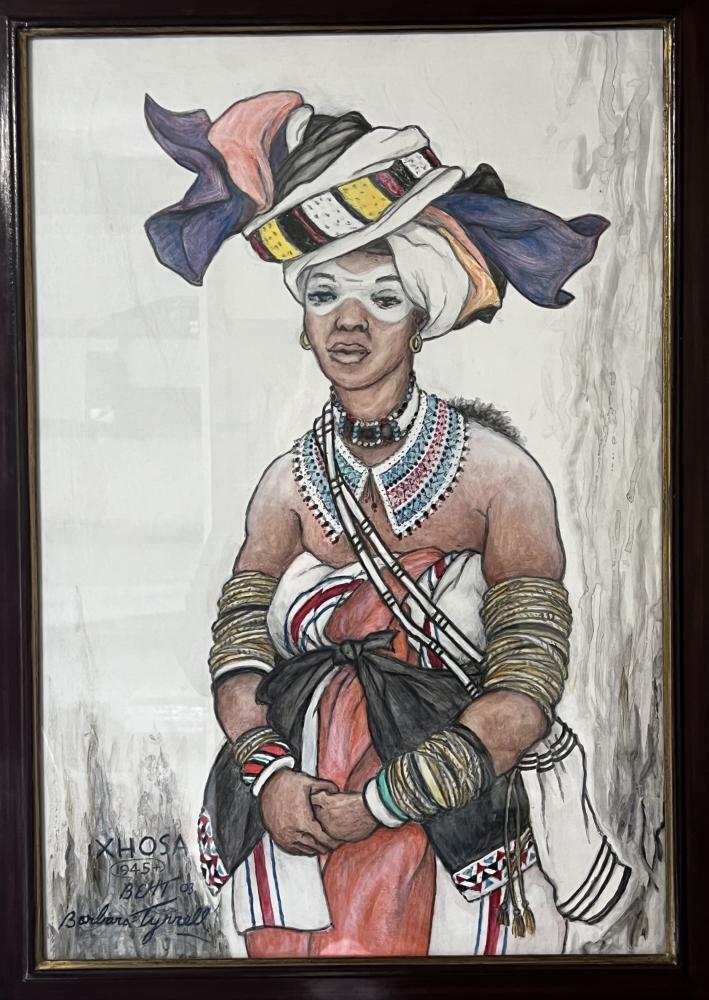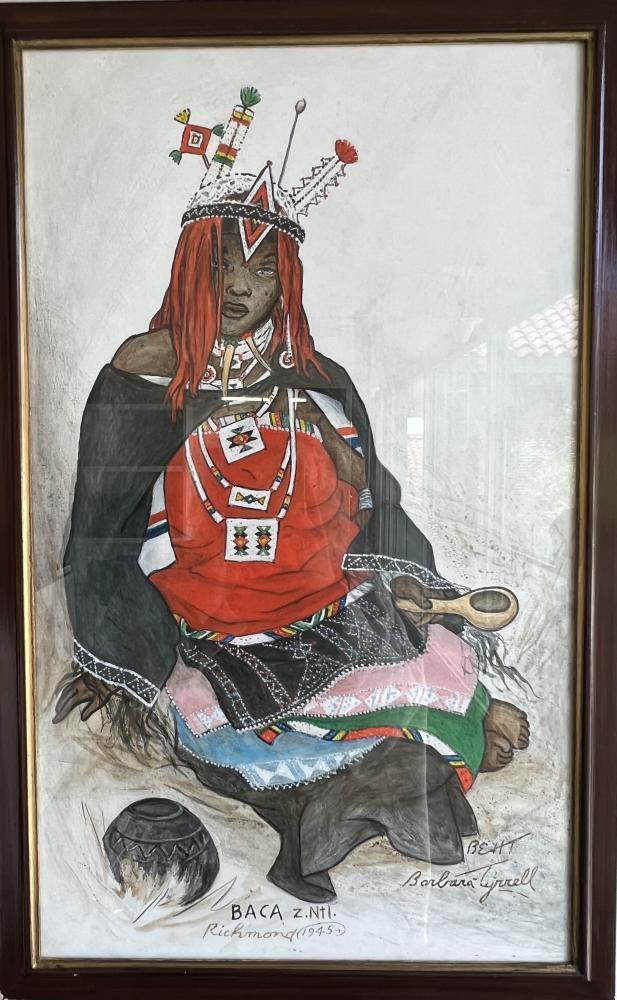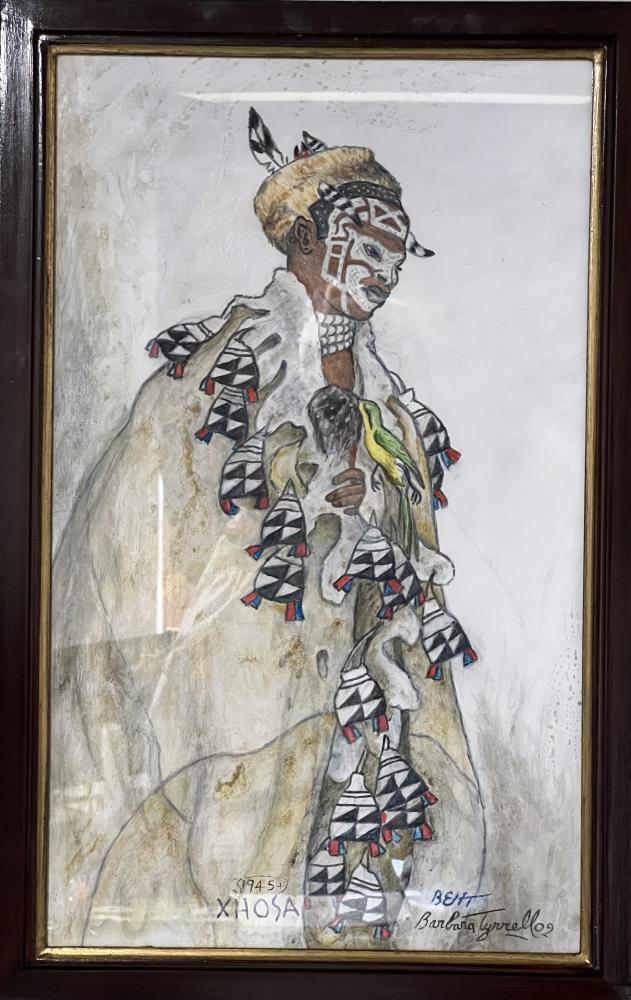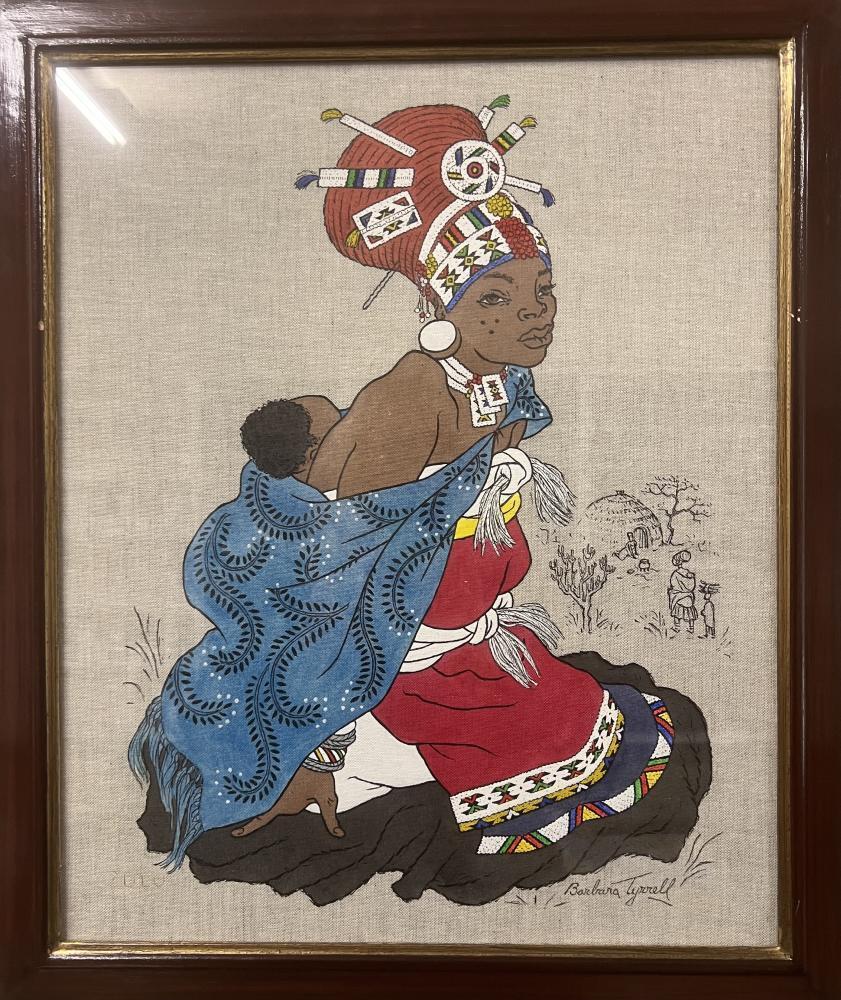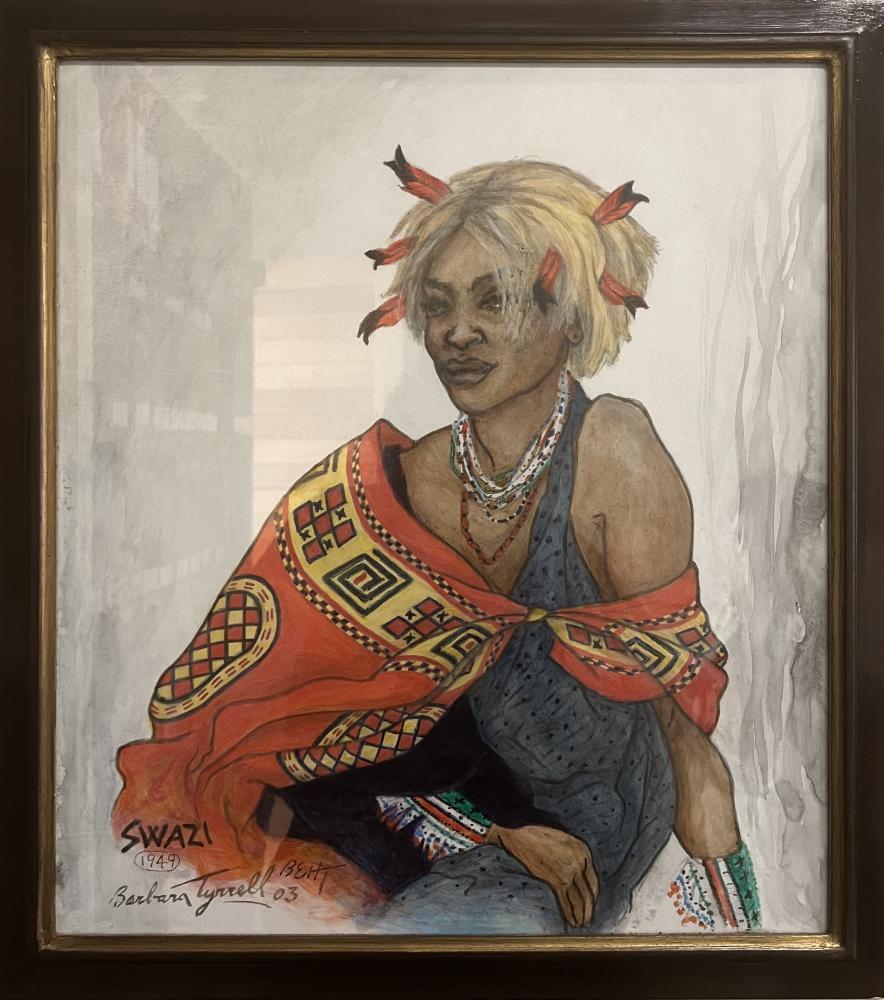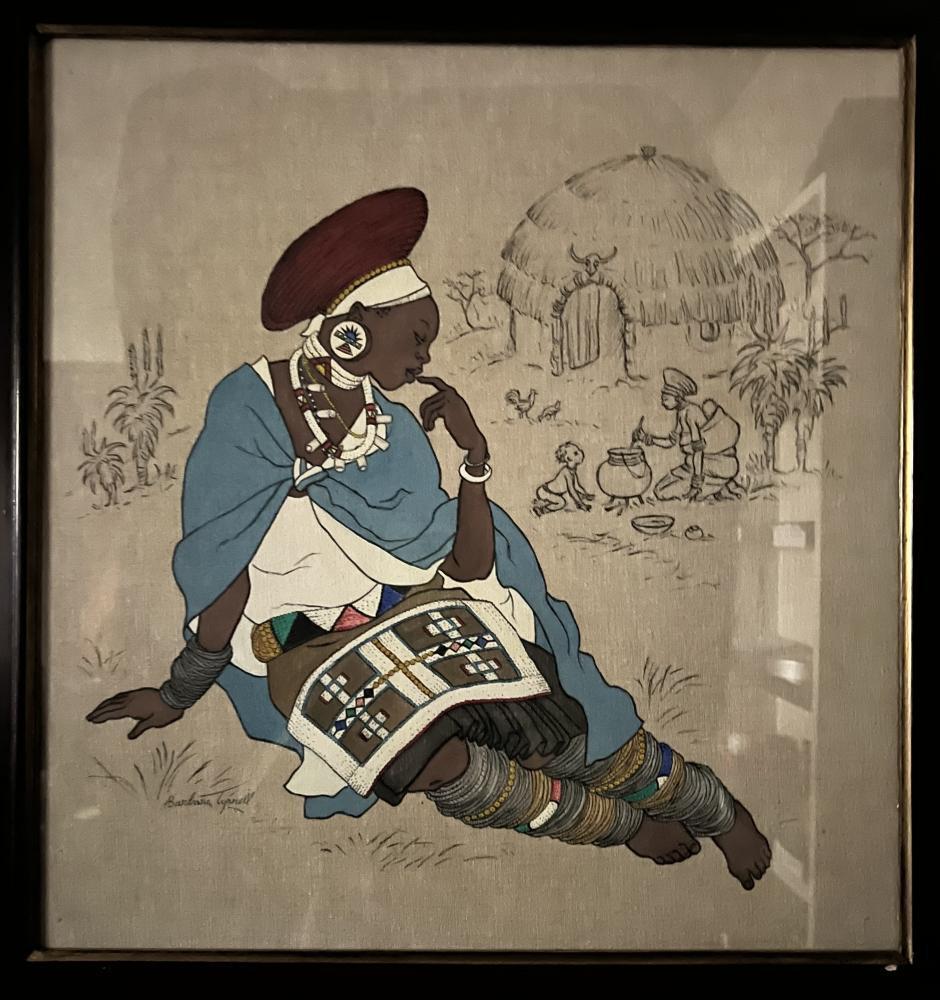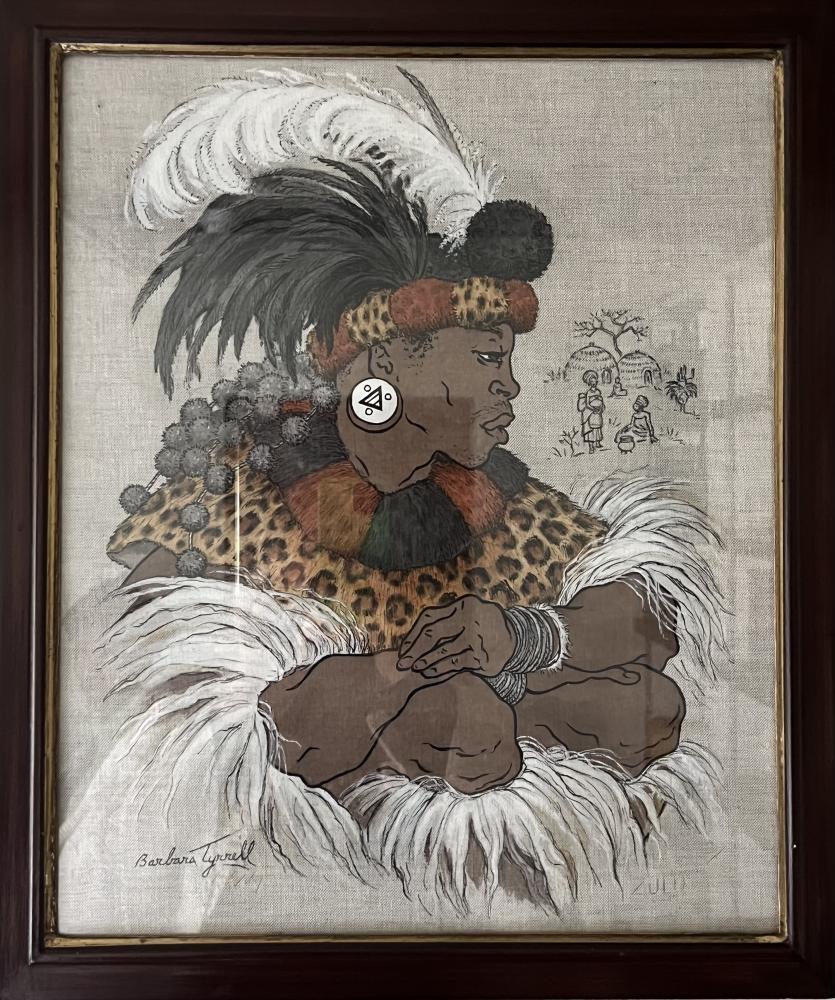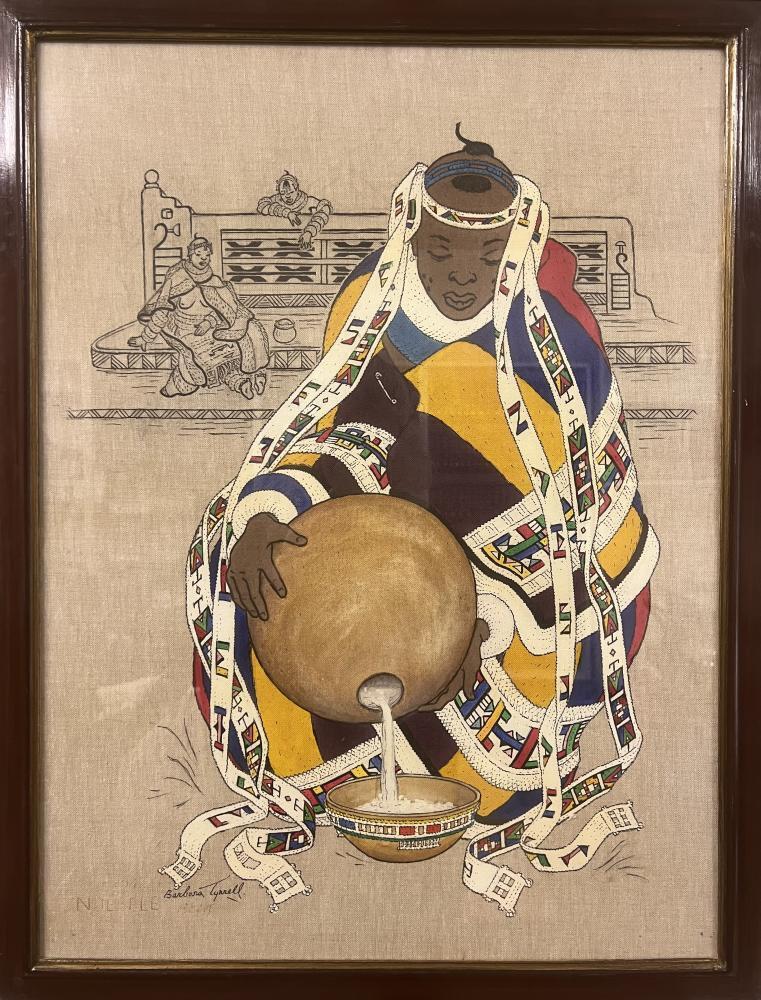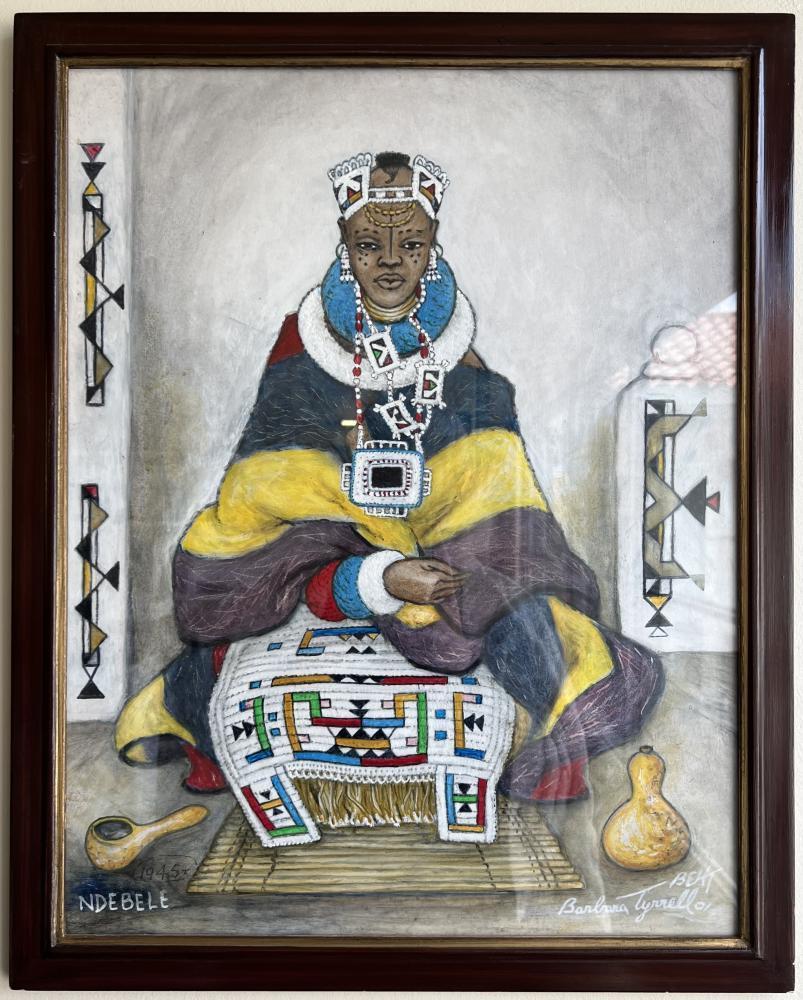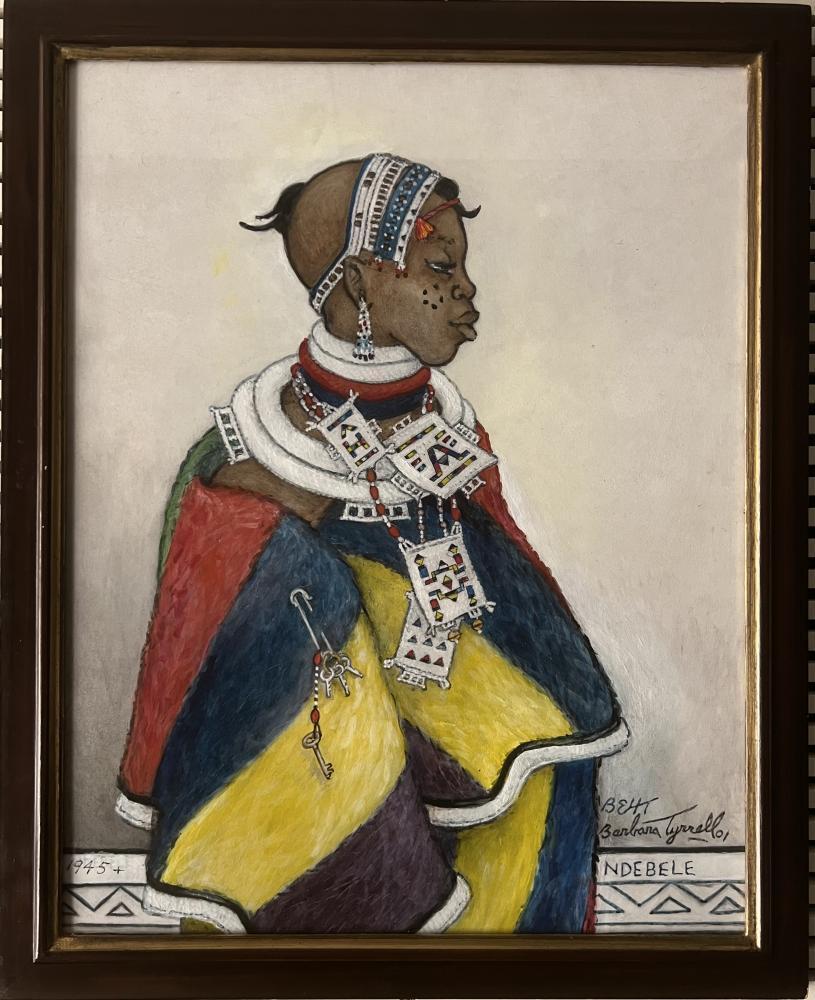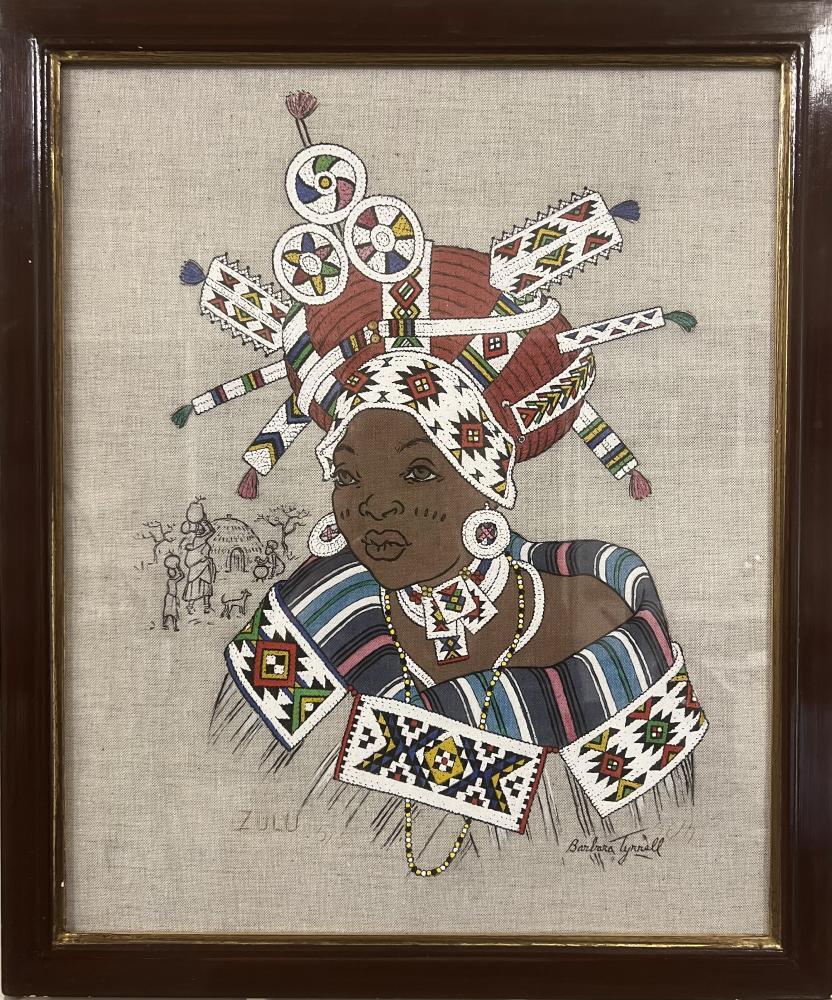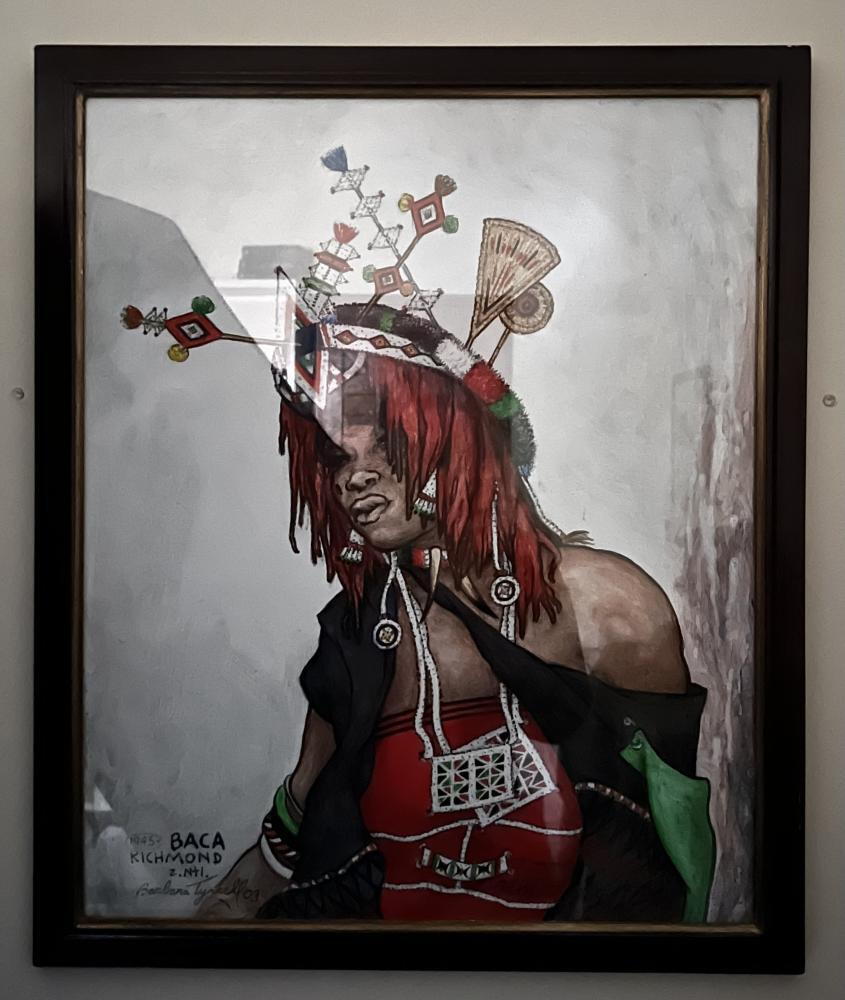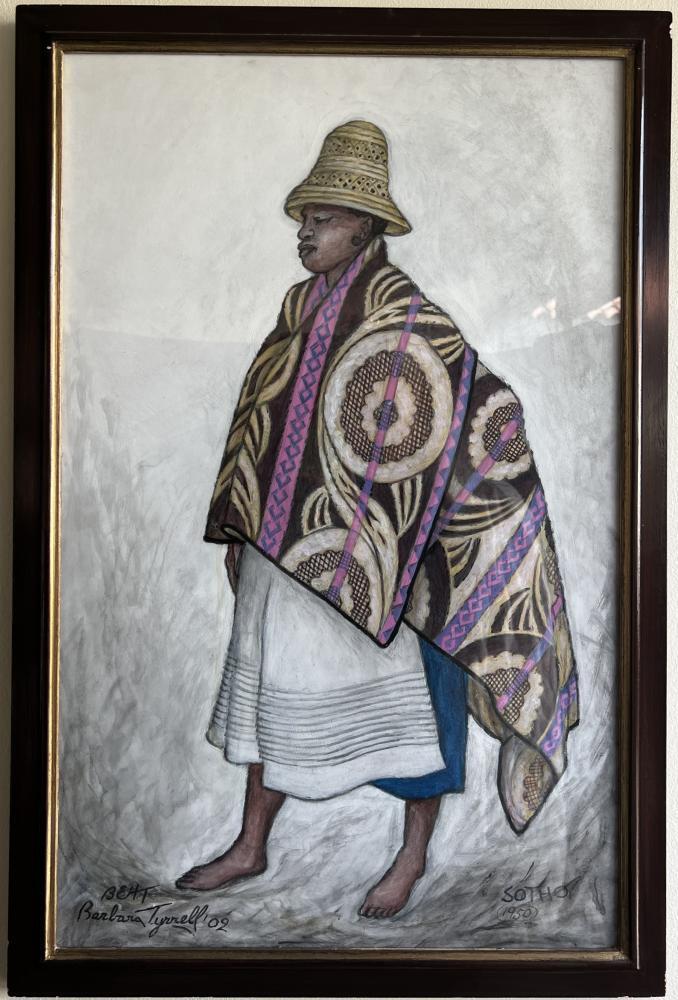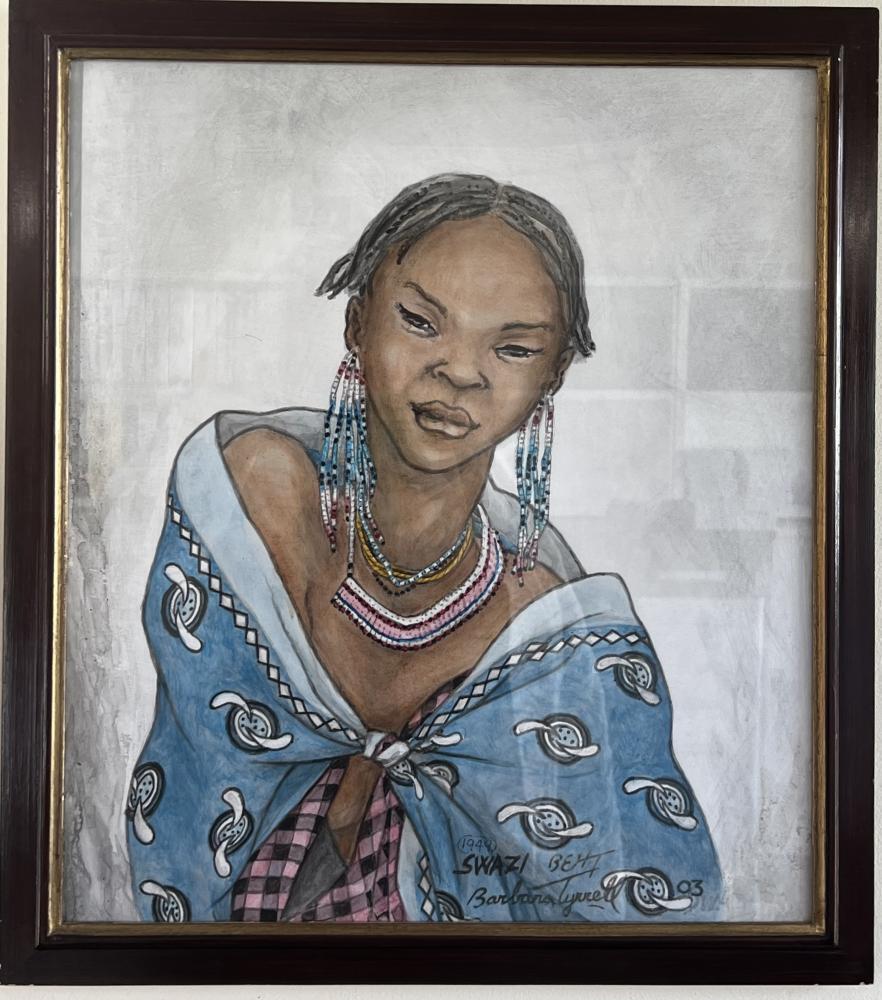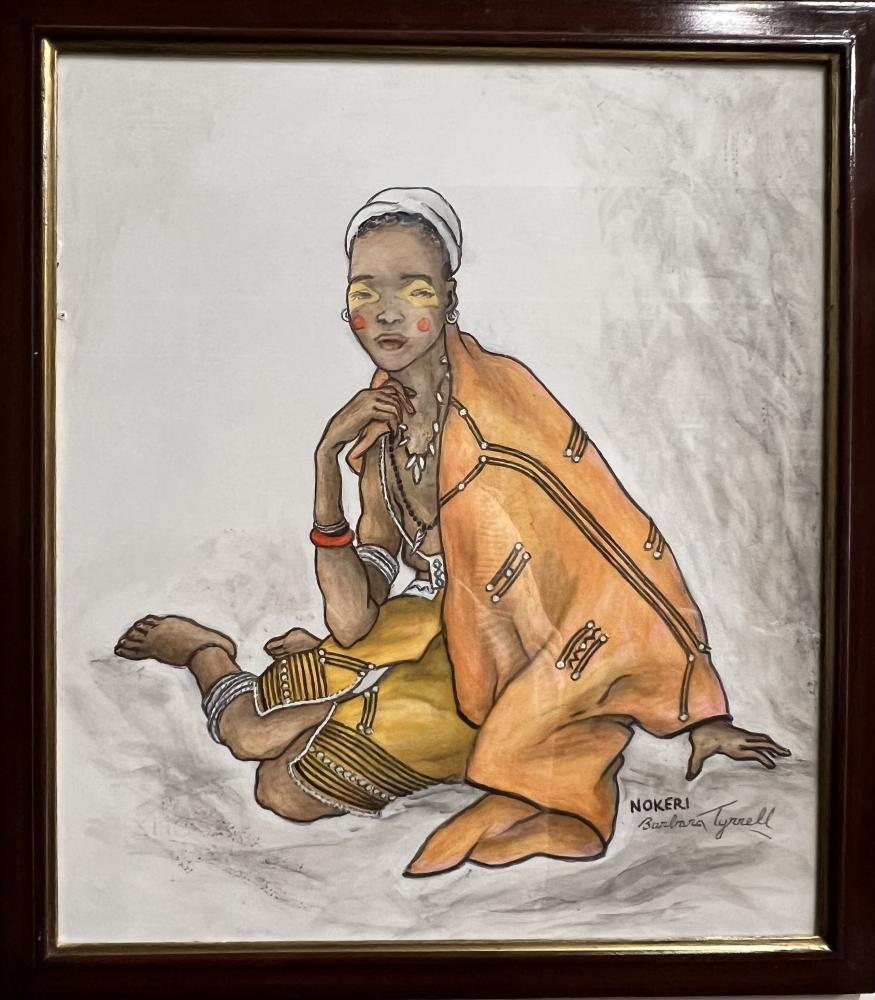Barbara Tyrrell's ethnographic drawings
| Series information: | Barbara Tyrrell (1912–2015) is known internationally for her detailed studies of the traditional dress of the indigenous peoples of Southern Africa. The ethnographic artist grew up at Eshowe in rural Zululand, where she developed her deep interest in the local Zulu people and became fluent in the Zulu language. After her fine art studies at the University of Natal (now KwaZulu-Natal), she spent many years traveling alone in the rural areas of Southern Africa with her small caravan, documenting the so-called “tribal” people’s relations, community and etiquette. Tyrrell drew her initial sketches in the field using a pencil, annotating it with notes on the color, pattern, and nature of the different items worn by the sitters. She was later joined by her husband, and they covered an area stretching from the Cape to Angola and the Zambezi Valley in the then Rhodesia (now Zimbabwe). Her work was supported and collected in quantity by Dr. Killie Campbell whose collections are today housed at the University of KwaZulu-Natal. Tyrrell’s donation of 32 sketches in 2008 culminated in a handing-over event on 21 September 2009. Tyrrell wanted the collection to be kept intact and accessible to the public as she highlighted that it is evidence of vanishing cultures. The sketches depict representations of individuals from 1Series bio unavailable different tribes belonging to Southern Africa. Tyrrell paired the donation with beadwork of 118 pieces and her handwritten notes accompanying the sketches, providing backstories on outfits worn, their meaning, and their history. Some of the beadwork donated by Tyrrell appears in some of the sketches donated. Tyrrell’s notes have informed the understanding of the research of her collection. Tyrrell collected the beadwork from her sitters whom she paid generously for sitting and for the beads. The sitters are portrayed as individuals, the traditional dress enhancing each sitter's personality – yet most are unfortunately unnamed. Today, questions of the work Tyrrell was undertaking include issues of representation as there are various perspectives on her work as a white ethnographer documenting the lives of Black Southern Africans. By showcasing these works in the context of the Constitutional Court building, Tyrrell’s work can be investigated and prompts fascinating questions for art practitioners and social historians. Tyrrell's records of human habitation in Southern Africa are, according to George G. Campbell, former chancellor of the then the University of Natal, “a monumental work of the greatest historical value as it could only be accomplished by one whose devoted application and adventurous spirit took her to the natural habitat and environment of her subject.” |

